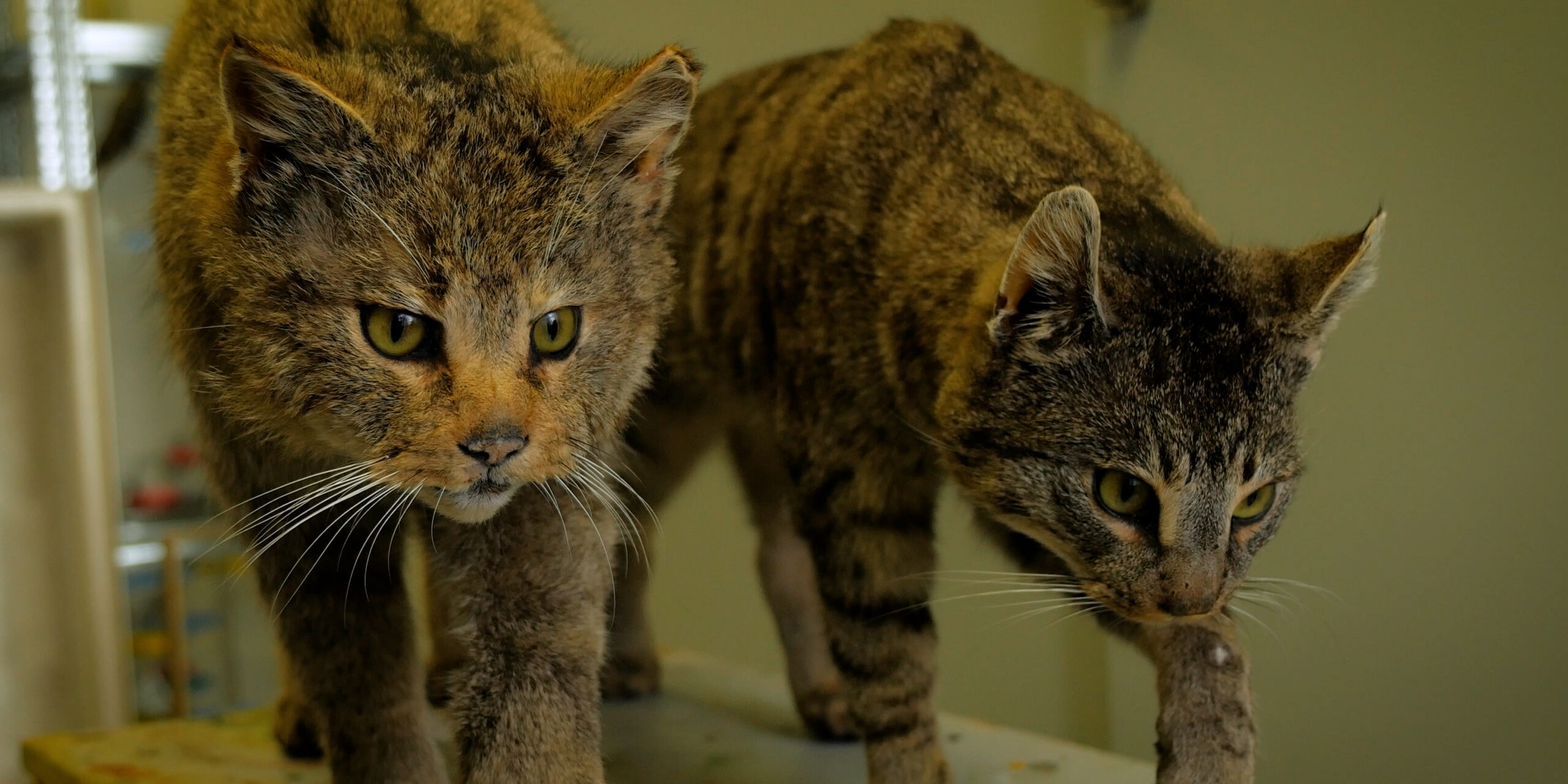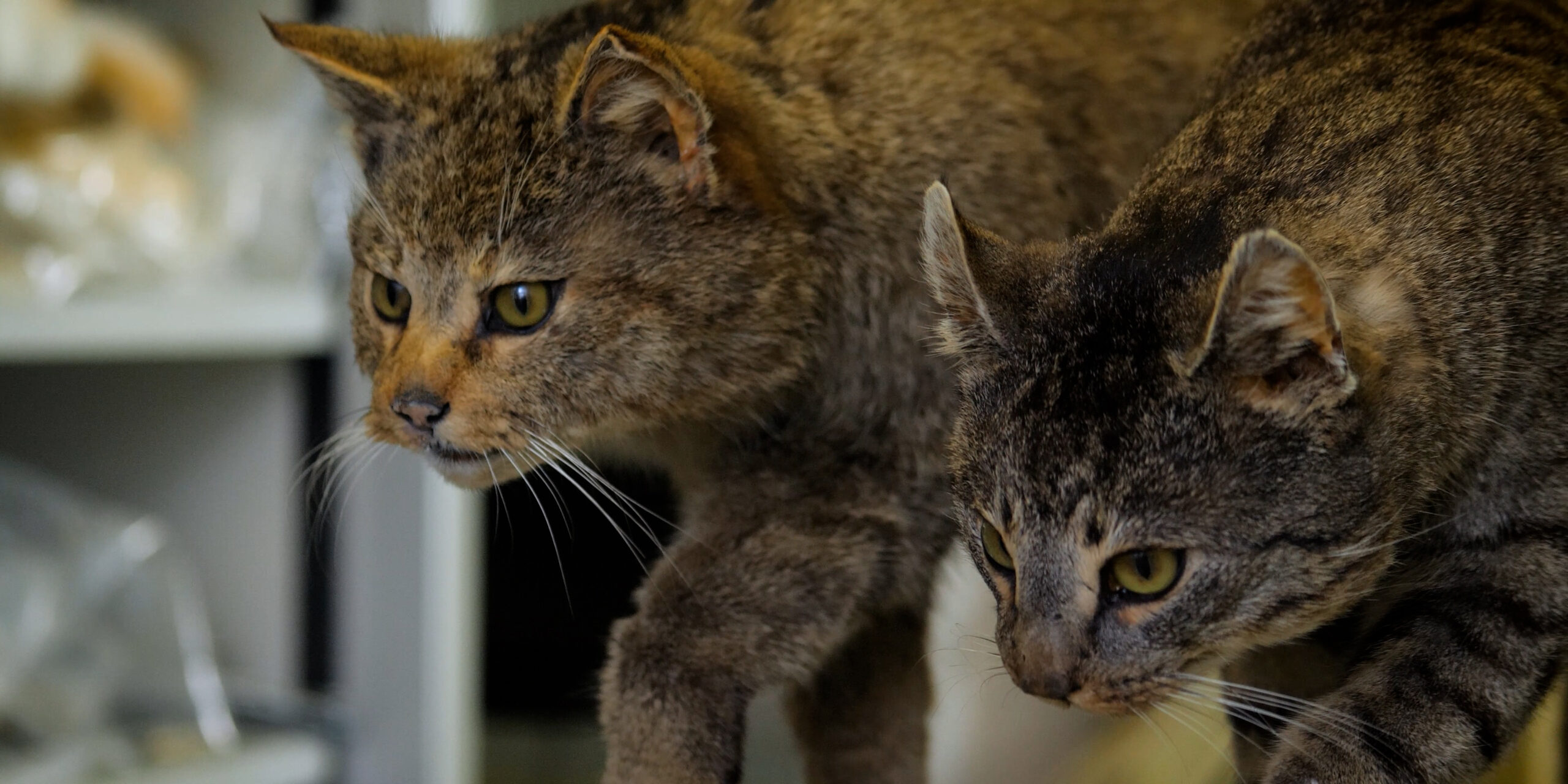Germany is home to an estimated 5,000 to 10,000 wildcats and approximately 6 to 8 million free-roaming domestic cats. Environmentalists frequently remind the public not to take any gray tabby kittens out of the forest due to the risk of confusion between the two species. But is it indeed impossible to tell the difference between a wildcat and a domestic cat?
The European wildcat (Felis silvestris silvestris) is neither a savaged form nor an ancestor of the domestic cat (Felis silvestris catus). It is also a subspecies of the species (Felis silvestris) and the genus true cats (Felis). The domestic cat is descended from the northeast African falcon cat (Felis lybica). The wild cat, on the other hand, has always been native to Europe. Although the wild cat can interbreed with the domestic cat and produce fertile offspring, it is genetically distinct from it. The shy lifestyle of the wildcat makes (genetic) detection difficult in practice.
(English captions are comming soon.)
Speciments by Matthias Krüger, Phyletisches Museum Jena
Characteristics of a European wildcat
The place of observation and the behavior allow a first assumption. For the wildcat behaves in a shy and cautious manner. It lives cryptically and thus avoids settlements and people. Although at first sight wild and domestic cats look quite similar, there are some distinguishing characteristics. In areas with little hybridization, such as central Germany, experts can therefore determine a wildcat with relative certainty on the basis of its coat markings, physique and gait. These typical external characteristics include, for example:
- On average, longer guard hairs make the wild cat look fuzzier than the domestic cat.
- Young animals have still a more pronounced coat pattern. In adult animals this pattern is rather blurred.
- A lightened area between the ears makes the neck and head markings clearly visible.
- dark dorsal line
- light throat patch
- bright muzzle
- bulky head shape
- broad muzzle shape
- thick, blunt and longhaired tail with black tail tip and clearly defined rings
In addition to appearance and DNA analysis, there are other characteristics that experts only determine when they examine dead animals more closely. Micro-CT scans show that the skull of the wild cat is larger on average. Measured by skull length, the brain volume is larger than in the domestic cat. The canine teeth give the scientist information about the age of the animals found. The more cementum the tooth has, the older the individual. Similar to annual rings in trees, the growth of tooth cementum in wildcats is also related to the seasons. Because the wildcat is even more specialized on carnal food, its intestinal length is on average shorter than that of the domestic cat.
In this YouTube video, David Cebulla explains some of these differences with examples from his wildcat monitoring:
To activate subtitles click the cc button in the player.







